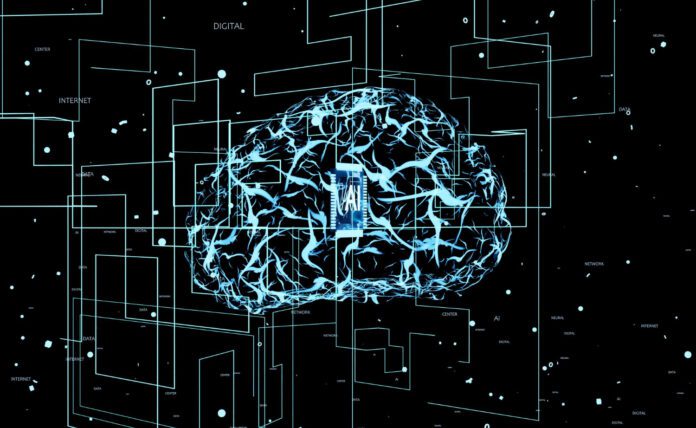Machine learning is one of the most transformative technologies of the 21st century, driving innovation across various sectors. From healthcare and finance to entertainment and transportation, machine learning is revolutionizing how we interact with technology. But what exactly is machine learning, how does it work, and what are its applications? This comprehensive guide will dive deep into the world of machine learning, explaining its fundamental concepts, mechanisms, and real-world applications.
What is Machine Learning?
Machine learning (ML) is a subset of artificial intelligence (AI) that enables systems to learn and improve from experience without being explicitly programmed. In essence, it involves algorithms that can identify patterns in data, make decisions based on those patterns, and improve over time as they are exposed to more data.
Key Concepts:
- Data: The foundation of machine learning, used to train algorithms.
- Algorithms: Mathematical models that process data to make predictions or decisions.
- Training: The process of feeding data into algorithms to help them learn.
- Models: The outcome of training, used to make predictions or decisions based on new data.
How Machine Learning Works
Data Collection and Preparation
The first step in any machine learning project is data collection. This involves gathering relevant data from various sources, which can include databases, web scraping, sensors, and more. Once collected, the data needs to be cleaned and preprocessed to ensure it is suitable for training algorithms.
Steps in Data Preparation:
- Data Cleaning: Removing duplicates, handling missing values, and correcting errors.
- Data Transformation: Normalizing data, converting categorical data to numerical, and scaling features.
- Data Splitting: Dividing the dataset into training, validation, and testing sets.
Choosing a Model
Choosing the right model depends on the problem you are trying to solve. There are several types of machine learning models, each suitable for different tasks.
Types of Machine Learning Models:
- Supervised Learning: Involves training a model on labeled data. Common algorithms include linear regression, decision trees, and support vector machines.
- Unsupervised Learning: Uses unlabeled data to find patterns and relationships. Common algorithms include k-means clustering and principal component analysis.
- Semi-Supervised Learning: Combines labeled and unlabeled data to improve learning accuracy.
- Reinforcement Learning: Involves training a model to make a sequence of decisions by rewarding desired behaviors.
Training the Model
Training a model involves feeding it the training data and allowing it to learn the patterns and relationships within the data. This process often requires iterative optimization techniques to adjust the model parameters and improve its accuracy.
Steps in Model Training:
- Initialization: Setting initial values for the model parameters.
- Forward Propagation: Computing the output of the model based on the input data.
- Loss Calculation: Measuring the difference between the predicted output and the actual output.
- Backward Propagation: Adjusting the model parameters to minimize the loss.
- Iteration: Repeating the process until the model achieves the desired accuracy.
Evaluating the Model
After training, the model needs to be evaluated to ensure it performs well on unseen data. This involves using the validation and testing sets to measure the model’s accuracy, precision, recall, and other performance metrics.
Evaluation Metrics:
- Accuracy: The ratio of correctly predicted instances to the total instances.
- Precision: The ratio of true positive predictions to the total positive predictions.
- Recall: The ratio of true positive predictions to the actual positive instances.
- F1 Score: The harmonic mean of precision and recall.

Applications of Machine Learning
Machine learning has a wide range of applications across various industries, driving innovation and efficiency. Here are some key areas where machine learning is making a significant impact:
Healthcare
Applications:
- Disease Prediction and Diagnosis: Machine learning models can predict diseases like cancer and diabetes from medical images and patient data.
- Personalized Treatment: Algorithms analyze patient data to recommend personalized treatment plans.
- Drug Discovery: Machine learning accelerates the drug discovery process by predicting the effectiveness of drug compounds.
Finance
Applications:
- Fraud Detection: Algorithms analyze transaction patterns to detect fraudulent activities in real-time.
- Algorithmic Trading: Machine learning models predict stock prices and execute trades based on market data.
- Credit Scoring: Predicts the creditworthiness of individuals and businesses by analyzing financial data.
Retail
Applications:
- Customer Segmentation: Algorithms segment customers based on purchasing behavior for targeted marketing.
- Recommendation Systems: Predicts products that customers are likely to purchase based on their browsing and purchase history.
- Inventory Management: Optimizes stock levels by predicting demand and reducing waste.
Transportation
Applications:
- Autonomous Vehicles: Machine learning enables self-driving cars to navigate and make decisions in real-time.
- Traffic Prediction: Algorithms predict traffic patterns to optimize route planning and reduce congestion.
- Fleet Management: Predictive maintenance models reduce downtime by forecasting vehicle failures.
Entertainment
Applications:
- Content Recommendation: Streaming services use machine learning to recommend movies, shows, and music based on user preferences.
- Content Creation: Algorithms generate music, art, and other creative content.
- Personalized Marketing: Analyzes user behavior to deliver personalized advertisements and promotions.
Challenges and Future Directions
While machine learning offers numerous benefits, it also presents several challenges that need to be addressed for its continued advancement.
Challenges
- Data Quality and Quantity: High-quality, labeled data is essential for training accurate models, but obtaining such data can be difficult and expensive.
- Model Interpretability: Understanding how models make decisions is crucial, especially in sensitive applications like healthcare and finance.
- Computational Resources: Training complex models requires significant computational power, which can be costly.
- Ethical Considerations: Ensuring that machine learning models do not perpetuate biases and are used ethically is a major concern.
Future Directions
- Explainable AI (XAI): Developing methods to interpret and explain machine learning models’ decisions to ensure transparency and trust.
- Federated Learning: Enables training models on decentralized data sources without sharing raw data, improving privacy.
- Quantum Machine Learning: Combining quantum computing with machine learning to solve complex problems faster.
- Automated Machine Learning (AutoML): Simplifies the process of developing machine learning models by automating key steps.

Conclusion
Machine learning is a transformative technology reshaping numerous industries by enabling systems to learn from data and make informed decisions. Understanding the basics of how machine learning works and its applications across various fields can provide valuable insights into its potential. By addressing the challenges associated with machine learning and exploring future directions, we can harness its full potential to drive innovation and improve our daily lives. As machine learning continues to evolve, staying informed and adapting to new developments will be crucial for leveraging this powerful technology effectively.
By following this guide and exploring the provided resources, you can gain a deeper understanding of machine learning, its mechanisms, and its wide-ranging applications. This knowledge will empower you to appreciate the transformative impact of machine learning on our world and consider how it might be applied in your own field of work. Happy learning!
Useful Links
- Introduction to Machine Learning
- Data Preprocessing for Machine Learning
- Types of Machine Learning Algorithms
- Training Neural Networks
- Evaluating Machine Learning Models
- Machine Learning in Healthcare
- Machine Learning in Finance
- Machine Learning in Retail
- Machine Learning in Transportation
- Machine Learning in Entertainment
- Challenges in Machine Learning
- Future of Machine Learning



